Jalppajin Memil - Seochon Branch (잘빠진메밀 서촌)
1.4Km 2021-03-18
41-1, Jahamun-ro, Jongno-gu, Seoul, Korea
+82-70-4142-1214
This is a Korean cuisine located in Jongno-gu, Seoul. A restaurant that uses noodles made with 100% buckwheat directly by the chef. The best menu at this restaurant is dumpling hot pot.
Deoksugung Pungnyu (덕수궁 풍류)
1.4Km 2020-04-21
99, Sejong-daero, Jung-gu, Seoul
• Centre d'appels 1330 : +82-2-1330 (coréen, anglais, japonais, chinois) • Pour obtenir plus d'info : +82-2-3011-2168
Deoksugung Pungnyu est un spectacle d’arts traditionnels organisé dans le cadre d’un palais niché au coeur de Séoul. C’est une occasion parfaite d’apprécier la beauté de la culture traditionnelle coréenne en admirant la musique et la danse dans le cadre d’un palais d’autrefois, qui s’harmonise si bien avec de genre de spectacles traditionnels. Ces performances pleines de passion sont offertes par des spécialistes des arts traditionnels, dont certains sont considérés comme des trésors culturels immatériels, ainsi que leurs élèves. Ces spectacles font partie des efforts pour faire des palais non seulement des reliques culturelles que l’on admire de loin, mais également un endroit où les riverains peuvent se reposer et apprécier la même musique traditionnelle que celle que leurs ancêtres écoutaient à cet endroit. Le spectacle Deoksugung Pungnyu offre aux visiteurs la chance de se plonger dans les arts traditionnels coréens en profitant des performances traditionnelles.
Jeju Mihang (제주미항)
1.4Km 2021-03-19
30-1, Myeongdong-gil, Jung-gu, Seoul
+82-2-319-1213
A place where you can enjoy dishes using well-known materials on Jeju Island. The best menu at this restaurant is braised cutlassfish. This Korean dishes restaurant is located in Jung-gu, Seoul.
Seochon Guest House [Korea Quality] / 서촌 게스트하우스 [한국관광 품질인증]
1.4Km 2023-04-07
28-3, Jahamun-ro 7-gil, Jongno-gu, Seoul
+82-010-3345-9680
Seochon Guest House is located in Seochon, which is becoming a hot place for tourists in Seoul, and precisely on the road to Suseong Valley, whichis filled with interesting stores and is also well-known for Park Nosoo Art Gallery and the House of Yun Dong-ju (poet). Seochon Guest House is nicknamed ‘Jaeminangol (interesting village)’ after Baekseok’s poem ‘Yeowunangol’, with the aim of providing a visit full of interesting experiences. Passing through a garden and entering the main building, the unique charm of this hanok building, the staircase to get to the first floor from daecheong (main floored room), catches the eye of the visitors. In addition, the building is decorated with various stylish objects including paintings and Korean musical instruments. The terrace situated on the first floor offers an open view of the surrounding area including roof tiles of hanok structures and alleyways in Seochon. It is said that Korean novelist Yoon Hu-myeong also appreciated the structure of the guesthouse, saying, “It is an interesting place.” Built in the 1930s, the house, which has many storage places, was taken by the owner couple in spring 2014 as they were attracted by the house during their trip to Seochon. After the repair work, the ground floor of the house was opened for guests from January 2016, hoping that guests could share their daily experiences and stories with each other. The guestrooms and the main floored room on the ground floor are open to guests, with the exception of the first floor, which is used by the owner couple. The living room is equipped with books, a curved TV, and a table. The tasty meal, which is served in the kitchen, consists of rice and soup with six side dishes and is much loved by guests. The guesthouse offers a total of four rooms – Jae Room, which is the most Korean-style room; Mi Room, which has a combined style of a Korean-style room and Western-style room; Nan Room, which is an ideal room for meditation with a beautiful paper window; and Ahn Room, which is equipped with a veranda and a pretty flowerbed. Every room has its separate charm with various comfortable bedding to provide a quiet and cozy bedroom for guests in the middle of the city. Furthermore, the guesthouse holds a pansori (epic chant) performance twice a year. The owner started learning how to sing pansori to promote the Korean culture and tradition to foreigners. When a pansori performance is held, the owner offers traditional Korean snacks and drinks including sikhye (sweet rice punch), sujeonggwa (cinnamon punch), traditional sweets and cookies, and tteok (rice cakes) to visitors, tourists, and performers. Moreover, it provides cultural programs such as a Gukak (Korean classical music) experience, Korean traditional clothes experience, and making Korean food experience, as well as other activities with guests, such as trip to the city wall between Inwangsan Mountain and Bugaksan Mountain, and the Royal Palace Tour to Gyeongbokgung Palace, etc., as well as a trip to a traditional market.
Musée National d’Art Contemporain de Deoksugung (국립현대미술관 덕수궁)
1.4Km 2023-06-23
99, Sejong-daero, Jung-gu, Seoul
+82-2-2022-0600
Le Centre d’Art du Palais Deoksugung a originellement été construit comme une annexe du Centre National d’Art Moderne. La structure est spécialisée dans la recherche et l’étude de l’art moderne, son but est également de proposer des expositions et de conserver des oeuvres précieuces.
Situé dans sur le site du palais Deoksugung, le centre se distingue par son ambiance unique autour des traditions. Le musée est aujourd'hui un grand complexe culturel majeure autour de l'art moderne proposant des programmes d'initiation aux arts en plus des expositions temporaires.
Maison bleue - Cheongwadae (청와대)
1.4Km 2024-05-17
1 Sejongno, Jongno-gu, Séoul
+82-2-730-5800
La première caractéristique de la résidence présidentielle, Cheongwadae, réside dans les tuiles bleues du bâtiment principal. En effet, le toit du bâtiment principal de Cheongwadae est composé de pas moins de 150 000 tuiles bleues. Chacune de ces tuiles a été préparées séparément afin qu'elles puissent durer plusieurs centaines d'années. Les tuiles blues et la forme incurvée du toit rentrent en parfaite harmonie avec le mont Bugaksan en toile de fond.
Cheongwadae est composée de différents bâtiments comme le bâtiment principal, Yeongbingwan (maison d'Etat), le hall Chunchugwan, le jardin Nokjiwon, la colline Mugunghwa, ou encore le pavillon Chilgung. Toutes ces structures disposent de leurs propres caractéristiques et de leur histoire, tous construit dans une architecture traditionnelle en Corée.
Le site propose également des expositions pour en apprendre plus sur l'Histoire de Cheongwadae. Le site est désormais ouvert aux visites.
Jjukkumiwa Maeungalbijjim(쭈꾸미와매운갈비찜)
1.4Km 2021-04-15
25-1, Mareunnae-ro, 2-gil, Jung-gu, Seoul
+82-2-2266-3208
The favorite store of office workers. The representative menu is braised short rib set menu. This Korean cuisine is located near Chungmuro Station, Seoul.
THE SIC-DDANG - Myeongdong Branch (더식당 명동)
1.4Km 2021-03-20
36, Myeongdong, 10-gil, Jung-gu, Seoul
+82-2-318-2234
A store where you can enjoy both Korean and Western dishes as a restaurant frequently featured in Korean gourmet programs. The best menu at this restaurant is lobster. This Korean dishes restaurant is located in Jung-gu, Seoul.
Darakjeong (다락정)
1.4Km 2021-03-26
131-1, Samcheong-ro, Jongno-gu, Seoul
+82-2-725-1697
Darakjeong has been popular for a long time because of the simple taste of its traditional Mandu (Korean stuffed dumpling). Since its opening in 1991, tasty soup and scrumptious Mandu have been served. A fist-sized Mandu is fully packed with seasoned meat, bean-curd, and various vegetables. Its thick dough makes it chewy and delightful. For one person, “Manduguk”(boiled dumpling soup) is a good choice. The delicious and nourishing taste of Mandu goes well with the sweet, spicy, and fresh taste of the soup. Manduguk is served in a brass bowl which keeps the food warm while eating. For a large-size group, “Mandujeongol” cooked with various vegetables in a casserole is recommended. There are two types of Mandujeongol that have different tastes. The main characteristic of “Kimchi Mandujeongol” is its spicy flavor, which reminds people of the refreshing taste of Kimchi soup, and “Tojang Mandujeongol” expounds on the savory taste of bean-paste soup. Tojang means folk soybean-paste. “Nokdujeon”(a Korean pan-fried dish with green mung bean) is another famous dish at Darakjeong, which is pan-fried with a very light seasoning to emphasize the original taste of Nokdu (green mung bean). Salted oysters with hot pepper are served with Nokdujeon instead of soy sauce, which is a perfect match.
Rue de Cheongwadae (청와대 앞길)
1.4Km 2020-04-23
Gungjeong-dong, Jongno-gu, Séoul
+82-2-120
La rue de Cheongwadae a été créée avec l’instauration du gouvernement civil, et s’étend depuis le carrefour de Hyoja à Hyoja-dong jusqu’au carrefour de Palpan à Palpan-dong. En suivant la rue Hyoja depuis la station de métro Gyeongbokgung, vous trouverez le Sarangbang de Hyoja, une fontaine, un bosquet d’hibiscus, le hall Yeonmugwan, le pavillon Daegogak et le hall Yeongbingwan.
Le Sarangbang de Hyoja est un petit bâtiment composé d’un rez-de-chaussée abritant une exposition relatant les 600 ans d’histoire de Séoul, et d’un étage où sont exposés des cadeaux d’hôtes étrangers prestigieux. Les visiteurs peuvent se reposer dans le jardin de derrière. Au Daegogak se trouve un tambour offert au président Kim Yeong-san en souvenir de l’ancien tambour Sinmungo. Le hall Yeonmugwan est l’endroit où le personnel des services de sécurité s’entraîne aux arts martiaux. On y trouve également une citadelle en pierre naturelle, ainsi qu’un espace de repos. Derrière le bosquet d’hibiscus siègent l’ambassade du Vatican et le pavillon Chilgung.
Bordée d’arbres touffus et de parterres fleuris, la rue de Cheonwadae est l’endroit rêvé pour une belle promenade. La résidence présidentelle Cheonwadae (qui signifie « Maison Bleue ») se trouve juste en face de la porte Sinmumun du côté Nord du palais Gyeongbokgung, et la rue se termine sur la porte Chunchumun, où se trouve le centre de presse de Cheonwadae. Un peu plus loin, la rue Samchongdong-gil s’étend depuis la porte Chunchumun jusqu’à la porte Geonchunmun (porte principale du palais Gyeongbokgung). De nombreuses galeries de peinture y sont installées (galerie Gukje, galerie Growrich, galerie Hyundai, etc) , ce qui en fait un lieu de prédilection pour tous les amateurs d’art.
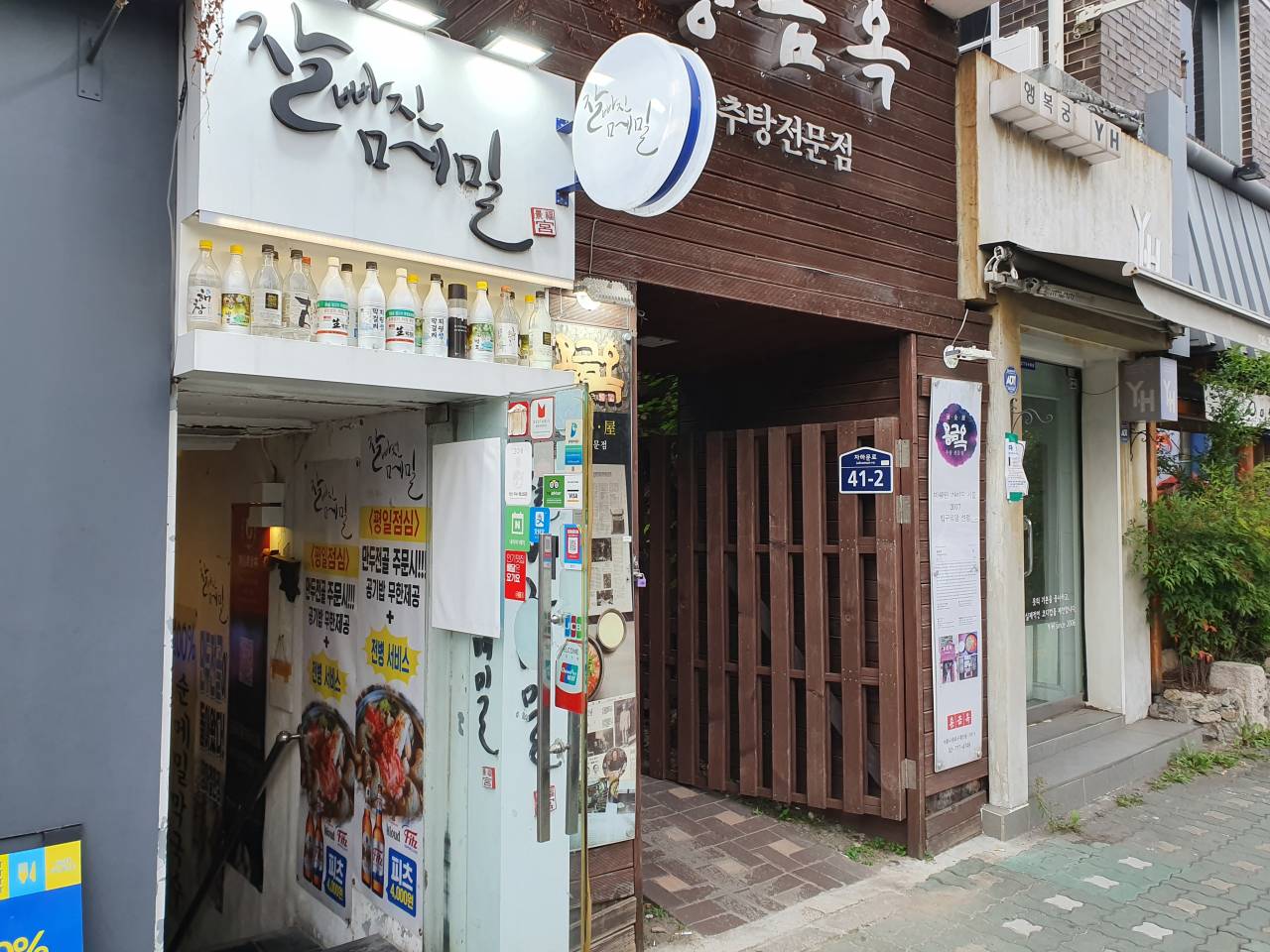
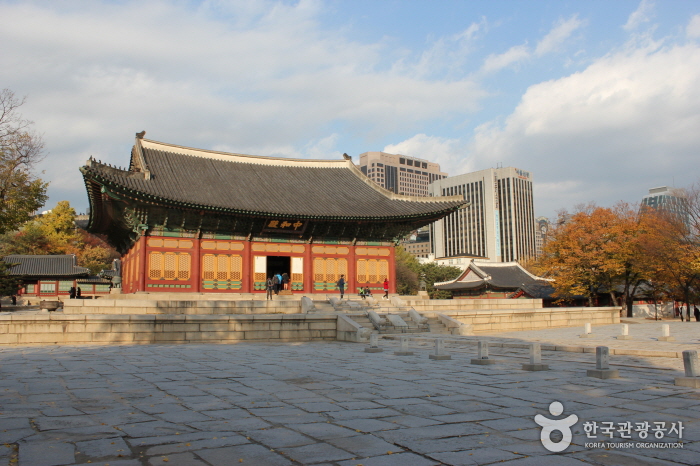
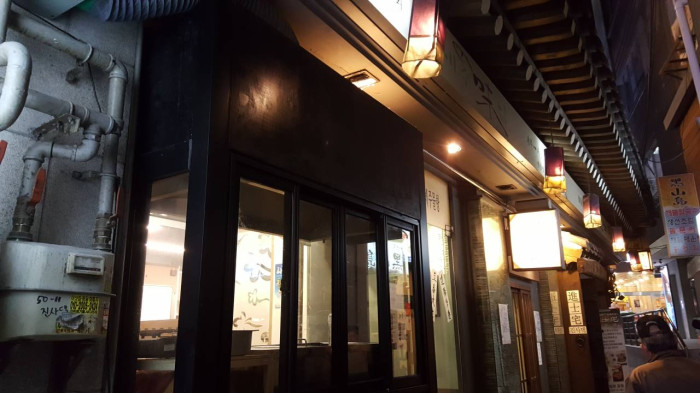
![Seochon Guest House [Korea Quality] / 서촌 게스트하우스 [한국관광 품질인증]](http://tong.visitkorea.or.kr/cms/resource/41/2447241_image2_1.jpg)
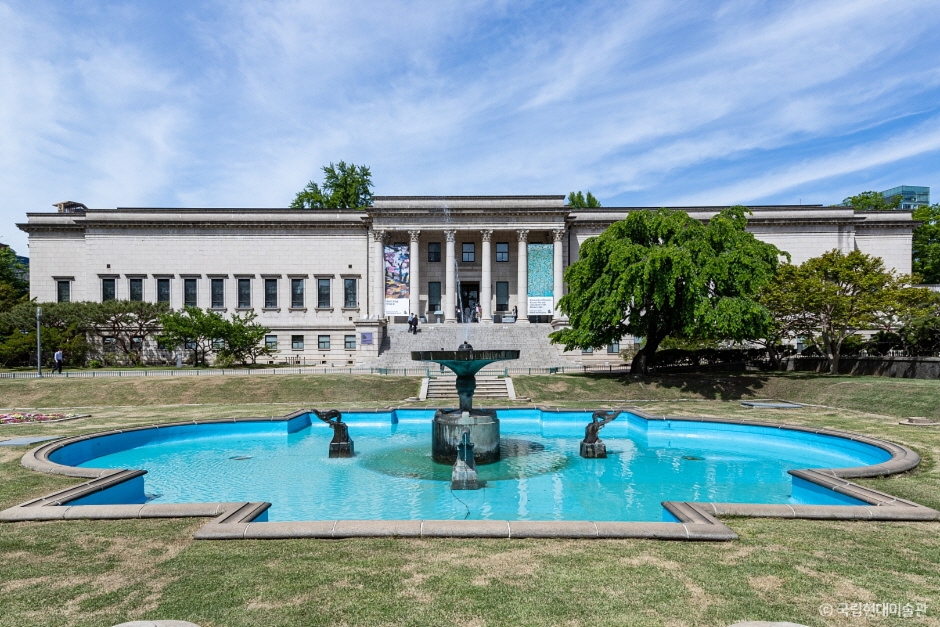
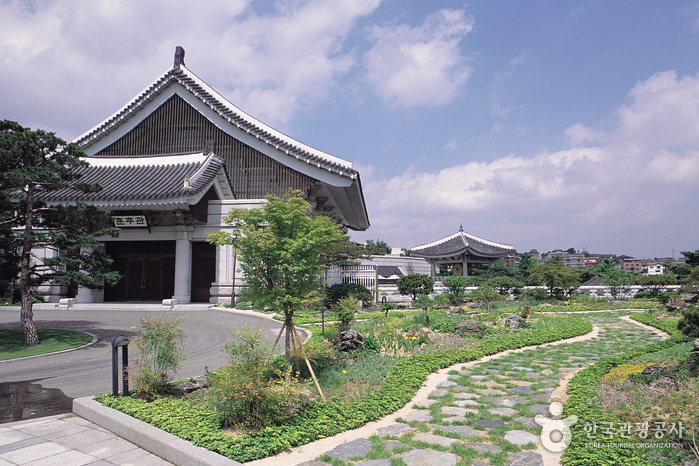
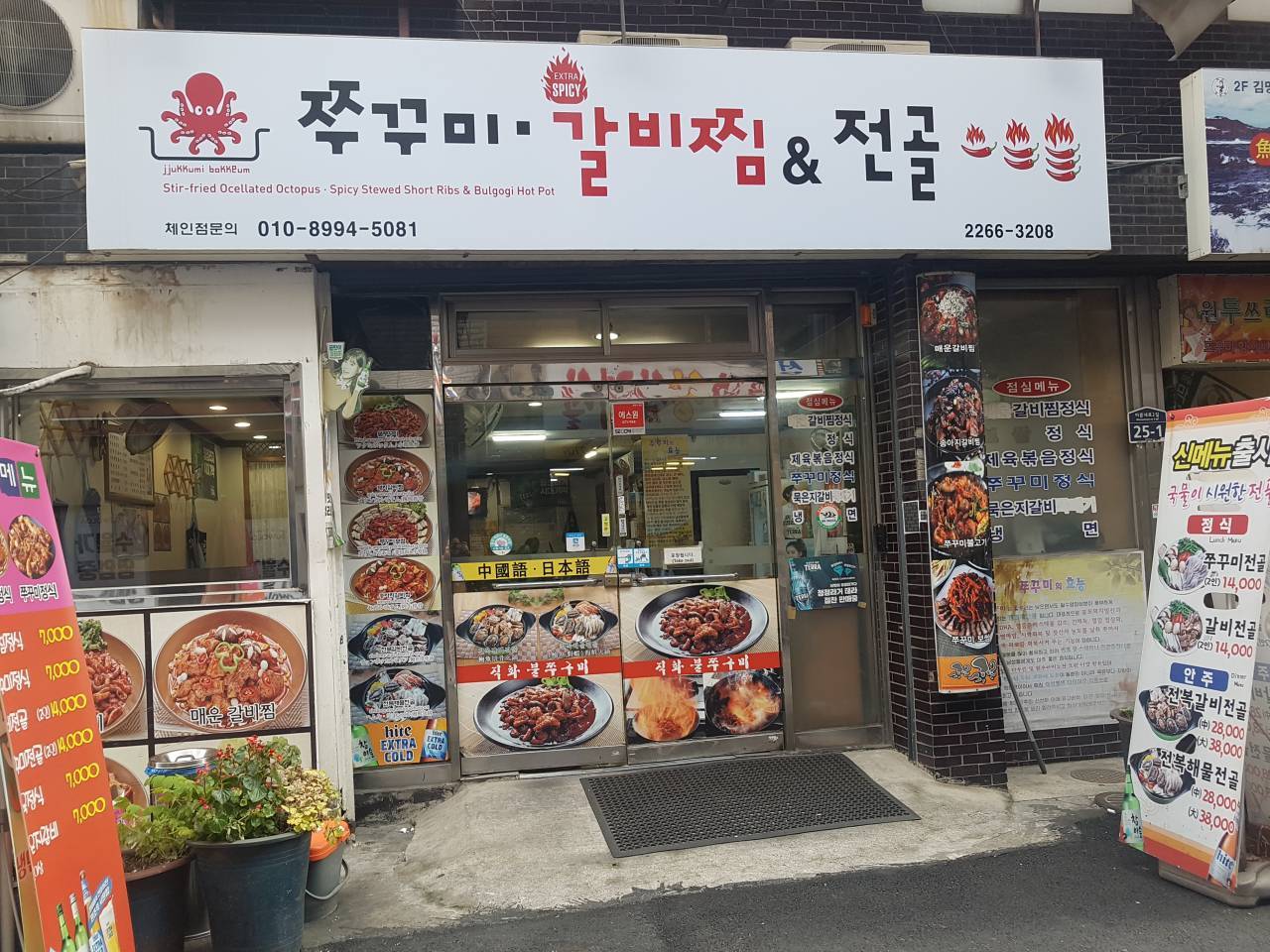
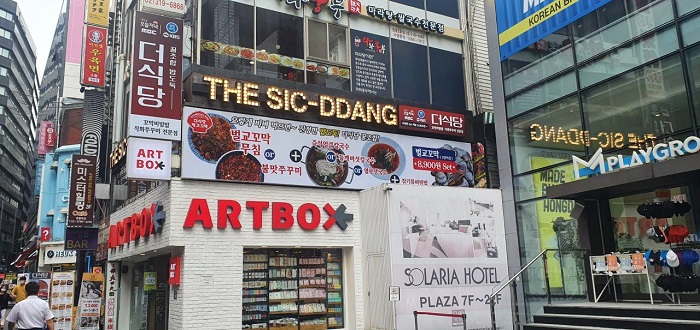

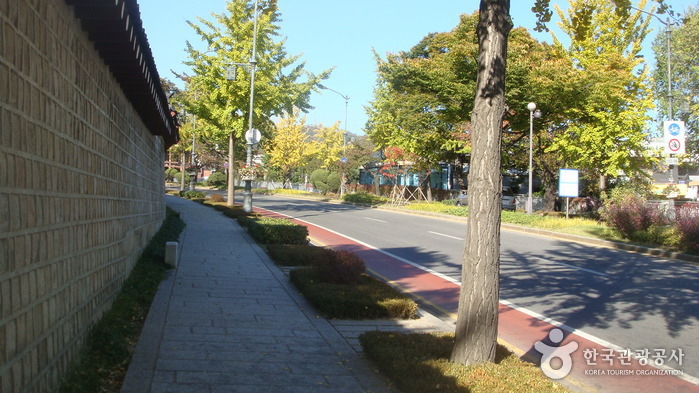
 Français
Français
 한국어
한국어 English
English 日本語
日本語 中文(简体)
中文(简体) Deutsch
Deutsch Español
Español Русский
Русский